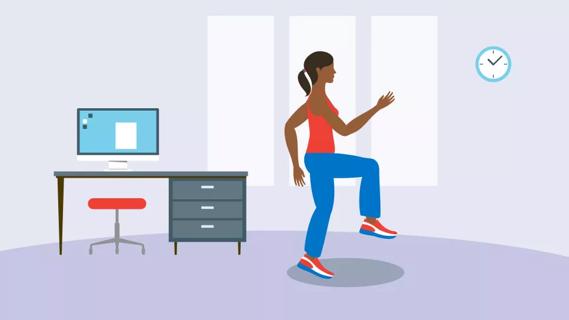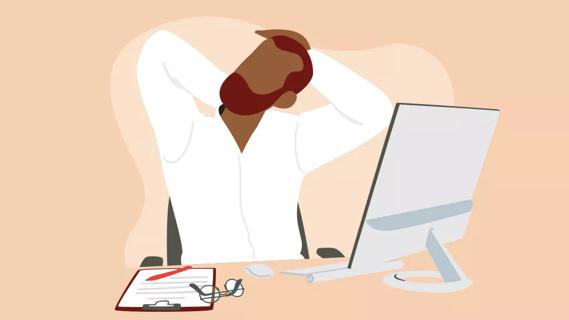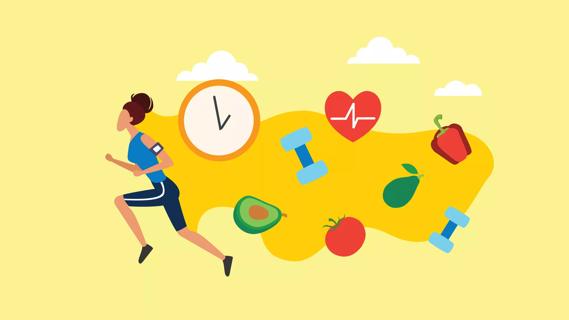Exercise lowers risk for heart conditions, improves mental health and reduces visceral fat that can compromise your organs

The advice is clear-cut: Sit less and purposefully move more for heart health.
Cleveland Clinic is a non-profit academic medical center. Advertising on our site helps support our mission. We do not endorse non-Cleveland Clinic products or services. Policy
But how does exercise help keep your heart healthy? How much exercise do you need? And what kinds of exercise should you do?
All valid (and important) questions.
We talked with preventive cardiologist Vikas Sunder, MD, and cardiac rehabilitation expert Erik Van Iterson, PhD, about what exercise does for your heart health and how to get started on a heart-healthy exercise program that fits your life.
The American Heart Association recommends at least 150 minutes of moderate-intensity exercise each week. That’s aerobic exercise — the kind that gets your heart rate up for more than a few minutes.
Additionally, an ideal exercise program for heart health also incorporates about an hour of strength-training exercises per week. Two sessions of resistance training for about 30 minutes at a time is a typical recommendation.
Those suggestions may change depending on your health, your goals and your current amount of physical activity. And reaching that standard could take some time. That’s OK.
“The goal should be to first and foremost avoid sedentary behaviors that take up the majority of your day,” Dr. Sunder notes. “Anything that people can do to move more than their baseline is important progress toward improving their heart health.”
Aerobic and strength-training exercises are both important for a healthy heart.
“When your heart functions in a healthy way, it’s more able to interact and communicate with other organ systems,” Dr. Van Iterson points out. “Your whole body benefits from well-oxygenated blood moving from the heart, out to your body and back again. Exercise helps to improve that entire process.”
What specifically can you look for as heart-healthy benefits of exercise? Dr. Sunder and Dr. Van Iterson share just a few.
Getting your body moving has plenty of heart-healthy benefits that directly affect how your heart works. Among them:
“Scientific data has consistently shown that aerobic, or cardio-style, exercise improves not just the circulation within your heart, but also the circulation throughout your entire cardiovascular system,” Dr. Van Iterson shares. “That ability to circulate blood in an effective and efficient way typically leads to powerful reductions in cardiovascular risk.”
You may have heard that a round mid-section (or so-called “apple body shape”) can be a sign of potential health problems. And it’s true.
A high waist circumference (the measurement around your belly button area) can be a sign that you may have higher-than-healthy levels of fat deep inside your abdomen, surrounding your organs. It’s called visceral fat, and too much can be dangerous to your health.
“High levels of visceral fat can have detrimental effects on the cardiovascular system and increase systemic inflammation,” Dr. Sunder affirms.
Aerobic exercise and strength-training exercises that incorporate your core can help burn fat and increase the overall proportion of lean muscle throughout your body.
Strength-training exercise can help your body gain more lean muscle mass. And muscle helps keep your body and heart healthy by improving your metabolic rate. In other words, muscle helps your body burn calories more quickly — even when your body is at rest.
“Unlike fat cells, muscle tissue is metabolically active,” Dr. Van Iterson explains. “That means that when you have a higher muscle mass, it’s not only during the literal act of exercise that your metabolism revs up; it’s working almost all the time.”
Exercise releases feel-good hormones called endorphins that help improve your mood and reduce your stress levels. That’s important because your mental health plays a big role in keeping your heart healthy. And as exercise makes you feel good, it should help with keeping up your motivation to do more exercise consistently.
“We know from studies that mental health concerns like anxiety and depression are associated with increased risk of heart attack, stroke and other cardiac events,” Dr. Sunder says. “And regular exercise can greatly decrease your risk for anxiety disorders and depression.”
Exercise is like the beginning of a chain reaction. It increases endorphins, which makes you feel happier. In turn, that lowers your stress, which improves your mental health. And improved mental health lowers your risk for a slew of heart-related health conditions.
The No. 1 rule for starting a new exercise program is to start small and build up gradually. Because consistent exercise over time is the key to success.
“Your exercise routine needs to be something that you can sustain over time,” Dr. Van Iterson advises. “I encourage people to view exercise as something they’re doing to set themselves up for long-term success. Overloading your system by doing too much too fast will turn out to be a counterproductive experience.”
Feeling exhausted and being out of breath at the end of a workout aren’t typical signs you should use to evaluate whether you had a good workout. In fact, those feelings commonly signal that you overdid it.
Avoid the trap of doing one really intense exercise session and then needing a few days to recover before being able to exercise again.
If you’re new to exercise, Dr. Sunder and Dr. Van Iterson recommend starting with aerobic activities. After you consistently meet or exceed your aerobic exercise goal, consider adding in some strengthening exercises.
Try starting with these exercises to improve your heart health.
Doing aerobic, or cardio, exercise is the first step to improving your heart health.
“The biggest thing that gets overlooked is that you can keep it simple,” says Dr. Van Iterson. “It’s really thinking about what we consider cardio or aerobic exercise, like walking. For others, it can be running or jogging. It all depends on where you’re at in your life and identifying realistic goals, what recent background you have with exercising and if you have any risk factors like a family history of heart disease.”
Remember, too, that even your day-to-day activities matter.
“Even cleaning your house, gardening or shopping can be ways to get in some physical movement that benefits your heart,” Dr. Sunder notes. “That all counts as time spent up and moving, which, ultimately, is the goal.”
Schedule your exercise in ways that work for you. If you don’t always have a half-hour block to dedicate to exercise, don’t let it discourage you from doing what you can. Even if you can get 10 minutes in a day, it’s worth it.
Here are a few examples of exercise that benefits your heart health:
For some people, strength-training exercise can conjure up images of powerlifting on a sweaty gym bench, and if that’s your thing, more power to you.
But there are other exercises that can help build muscle and improve your heart health that may be more approachable for newcomers.
You start by trying:
Anything you can do to get your body moving is going to benefit your heart. And the rest of your body. And your mental health. So, start small. Keep going. And show your heart the love it needs.
Learn more about our editorial process.

Chair exercises can help people age 65+ retain independence

Both are needed for a healthy body

Counteract psoas muscle stiffness and soreness with stretches that lengthen and strengthen

It may be OK, depending on your health, fitness level and type of exercise

Simple exercises like wall angels and pelvic tilts can help keep your body in an optimal position — and help undo years of improper posture habits

Losing belly fat can reduce your risk for chronic health conditions — try focusing on a diet high in lean protein, exercising regularly, reducing stress and getting quality ZZZs

It’s best to exercise before or after your fast, instead of during it

Absolutely! In fact, in many ways, exercise is key to recovery

Your metabolism may torch 1,300 to 2,000 calories daily with no activity

A gentle touch in all the right places may help drain your sinuses